Labor shortages in America right now
Help wanted

But why are there shortages?
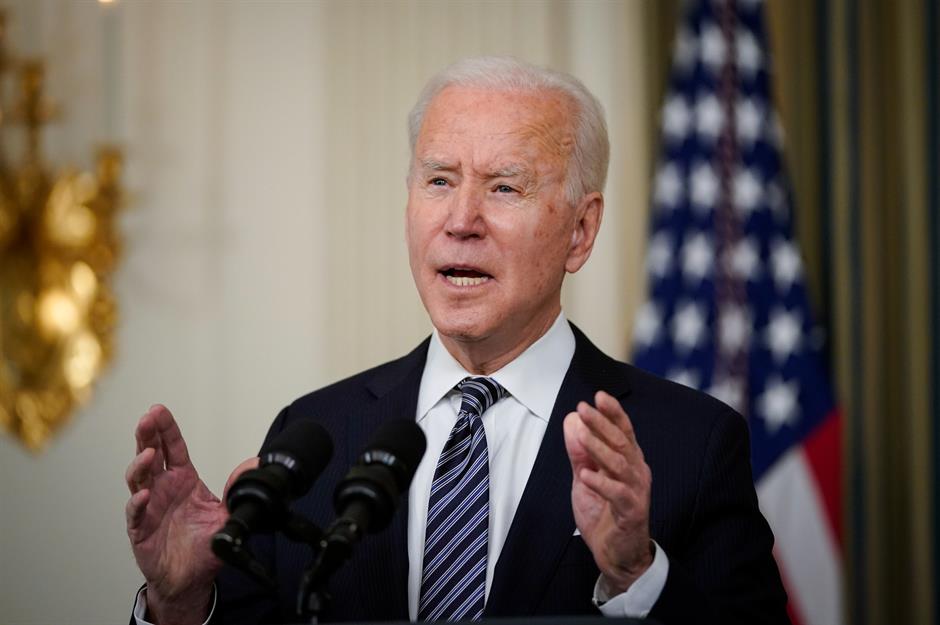
As the post-COVID recovery began last year, unemployment fell sharply. August 2021 saw 235,000 more people employed than in the previous month, prompting the unemployment rate to drop to 5.2%, according to the US Bureau of Labor Statistics (BLS). The trend has continued, with the BLS reporting a rate of just 3.6% this June.
Unfortunately, low unemployment doesn't mean that all the vacancies have been filled. The truth of the matter is that there are simply fewer workers, with labor force participation remaining below pre-pandemic levels. Many of those who lost or left their jobs during the pandemic haven't come back. In the case of three million older adults, for instance, the pandemic was the perfect reason for taking early retirement.
Many companies are offering very attractive perks to attract new recruits, from big joining bonuses to early promotion. This trend has contributed to record resignations as people leave their current jobs, whether to make the most of the benefits other businesses offer, to find an industry that's potentially pandemic-proof, or to have a change of scene after burning out in the past two years.
According to a report this June from the US Chamber of Commerce, there are approximately 11.4 million job openings but just six million unemployed workers. That's a severe shortfall.
Let's take a look at the worst-affected sectors.
Teachers

The havoc caused by the COVID-19 pandemic worsened teacher shortages across the US, with around 38% of public school teachers having said the stressful period has made them consider switching careers, according to the Center for State and Local Government Excellence. At college level around 55% of educators said they have seriously considered changing jobs or retiring early.
President Joe Biden has earmarked $9 billion of his American Families Plan to address the nation’s shortage of teachers, and it will fund the training of a new cohort of education professionals if passed.
Cafeteria workers

It’s not only teachers that are needed to keep a school running – students also need to be well fed. But this has become increasingly difficult as shortages of cafeteria workers have cropped up across the US. The problem is so severe that authorities in North Carolina are allocating $10 million to filling staff vacancies in school kitchens.
The money will be distributed as bonuses to new and existing staff and should help to fill the staff shortages of up to 25% that are being reported by some public school units. In Jefferson County, Colorado, wages for school cafeteria staff have risen from $12.48 an hour to $15, but so far the move hasn’t encouraged many people to take up the job.
Lifeguards

The pandemic forced the closure of swimming pools across the US, making lifeguard training near impossible for many. And since lifeguards need to be recertified every two years, many guards saw their qualifications expire in that time. The issue has been exacerbated by visa restrictions, as many lifeguards are students from overseas.
As we approach the hottest days of the year, the lack of lifeguards is proving to be a real issue. Many local pools in major cities such as Chicago, New York and New Orleans are having to reduce their hours of operation or even shut down entirely. As the BBC has reported, the American Lifeguard Association expects at least one-third of public pools to be affected – "a crisis," according to the Association’s director of health and safety.
In an effort to boost recruitment, lifeguard pay has risen sharply. Pools that offered $16 per hour at the beginning of the summer are now typically offering $20 or even more.
Hotel staff

As vaccination rates have shot up so have domestic vacation bookings, but American hotels are struggling to keep up with demand due to a lack of staff. The American Hotel & Lodging Association reported that 96% of its respondents had open positions at their establishments, according to the Wall Street Journal, while management staff have reported taking on additional duties to make sure everything gets done, from watching the pool to cleaning the bathrooms.
Some hotels are taking their recruitment drive to the next level, such as the luxury hotel Fairmont Scottsdale Princess in Arizona, which is offering a $500 joining bonus to new starters and existing employees who refer successful applicants.
Pilots
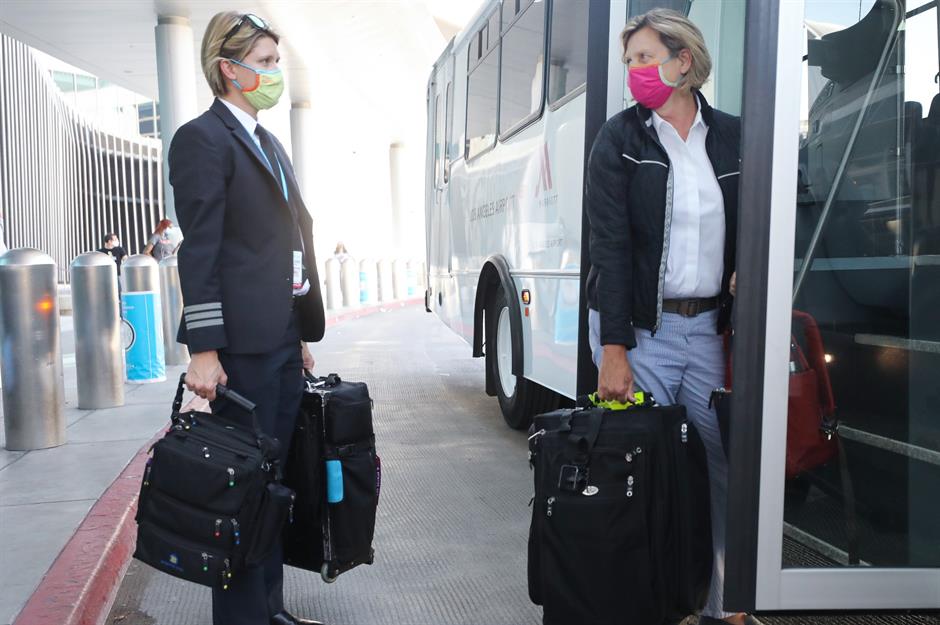
The pandemic decimated the travel industry, causing thousands of people to lose their jobs. Now the aviation sector is facing the opposite problem: many companies can’t hire pilots quickly enough. The sudden resurgence of travel has forced many airlines to cancel flights because there aren’t enough pilots to fly the planes, and experts predict the problem will only worsen as the industry makes a full recovery post-pandemic.
The shortages will really hit between 2023 and 2025, according to consulting firm Oliver Wyman, which predicts there will be a deficit of around 50,000 pilots worldwide by the middle of the decade. Years of expensive training in order to become qualified is one factor that has contributed to this shortage.
Supermarket workers
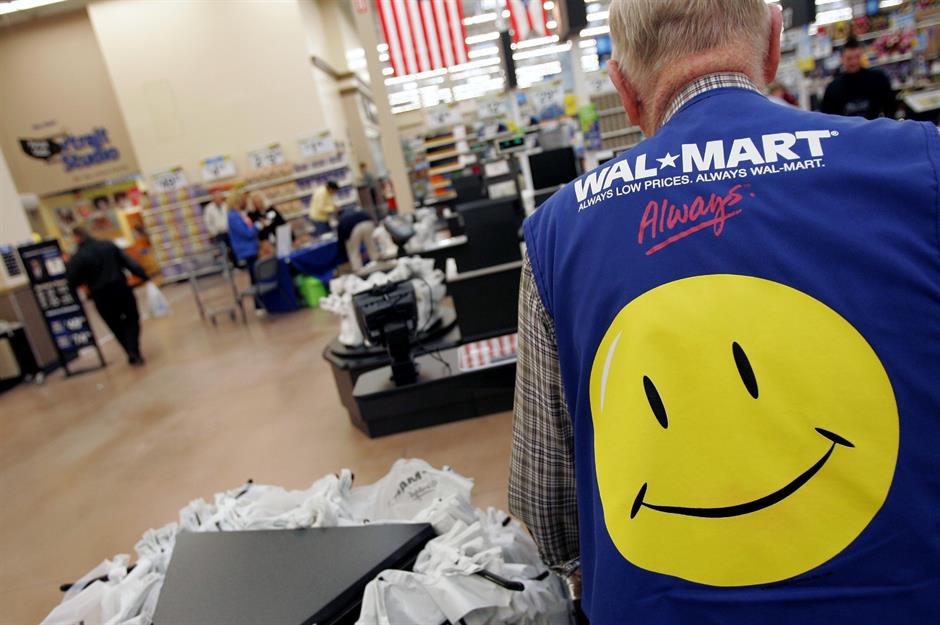
Grocers are struggling to get the workers required to open new locations and keep up with huge in-store demand. Walmart announced plans last year to increase its hourly pay to at least $15.25 as it sought to retain staff, while in August 2021 Target announced a new perk for the fall: a debt-free college education for its workers, which its CEO Brian Cornell hopes will make the company "a preferred place to work."
Take a look at industries that will boom after coronavirus
Caregivers

America’s aging population means that more caregivers are needed than ever before, but poor pay, inconsistent schedules and the challenging nature of the work mean there's a real lack of qualified staff. Family members often fill the gap when it comes to providing care, with 95% of caregivers being relatives of those who need assistance, according to a 2017 study by Merrill Lynch.
By the end of the decade, an extra one million home-based caregivers will be required, as reported by National Public Radio. In a bid to tackle the shortage, President Biden wants to assign some of his proposed $400 billion homes and communities-based services bill to giving caregivers "a long-overdue raise, stronger benefits and an opportunity to organize or join a union."
Physicians
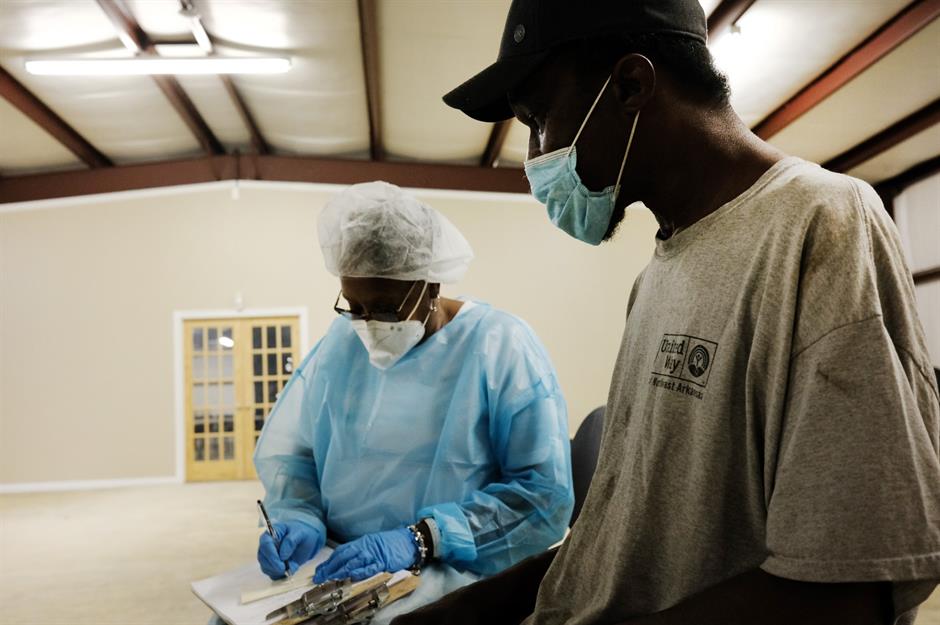
The global health crisis has really highlighted America’s potentially catastrophic lack of physicians and the vulnerability of its healthcare system. The gap between the number of physicians and the number of people requiring care has only grown during the pandemic, and by 2034 there could be a shortage of between 37,800 and 124,000 physicians – including primary and specialty care – according to data by the Association of American Medical Colleges.
Nurses

There's also a shortage of nurses, with thousands having burnt out during the pandemic before deciding to leave the profession. In fact, according to the Center for American Progress (an independent nonpartisan policy institute), the number of registered nurses fell most severely when they were needed most, dropping 3% between 2020 and 2021. That's the greatest drop in two decades.
Mental health practitioners

Bouts of stay-at-home orders, paired with uncertainty and loss during the pandemic, have prompted a surge in people seeking help with their mental health. Increased rates of depression, anxiety and insomnia have been common across the US, stretching the limited number of mental health practitioners to the max. The 2008 Mental Health Parity and Addiction Equity Act helped to improve access and coverage for mental health, but after a challenging couple of years it’s an industry that’s still lacking qualified staff.
Veterinarians

There was a huge boom in pet ownership in 2020 as Americans sought out companionship from furry friends, with around 12.6 million US households welcoming a new animal into their homes. Veterinary practices saw an influx of new owners bringing in their pets for treatment and many people who already had animals were spending more time at home, meaning they had more time to pick up on their pets’ ailments. Inadequate pay and burnout are common reasons for qualified vets to leave the profession, and these issues have only worsened amid the pandemic and a shrinking veterinary workforce.
Car technicians

It’s predicted that there will be 46,000 unfulfilled auto technician roles by 2026, according to the US Bureau of Labor Statistics. This doesn’t match the burgeoning demand from the auto industry that brings 17 million new cars to the US market each year. An aging workforce and a lack of enthusiasm for entering the industry compared to previous decades, along with the growing number of vehicles on the roads, have been cited as reasons for the lack of technicians.
Police officers

The current shortage of police officers in the US hasn’t stemmed from two years of heightened police scrutiny, according to the Department of Justice, but rather follows a pattern that has been eight years in the making. In 2020 86% of departments reported a lack of staff, according to a National Police Foundation survey.
There are several reasons why the police force hasn’t got the numbers it needs, including high retirement rates as the Baby Boomer generation leaves the workforce. As President of Law Enforcement Legal Defense Fund Jason Johnson explained to ABC News, fewer young people are entering the profession as it isn't considered to be as "financially rewarding" as other careers.
Firefighters

The police isn't the only emergency service facing staffing difficulties. As reported by National Public Radio, firefighters receive low salaries and a lack of benefits despite their day-to-day job becoming more demanding due to climate change. These severe demands were seen last year as the country experienced its hottest summer on record and firefighters were left to tackle wildfires on an unprecedented scale. President Biden pledged to address the shortages by increasing pay for federal firefighters last August and installing more trained workers across the country.
Lawyers

Demand for lawyers has gone through the roof in America, with more and more firms seeking out new joiners. By 14 May 2021 there were 8,268 jobs available across around 1,000 firms in the States, according to legal market data supplier Leopard Solutions – a 150% increase compared to the start of the pandemic.
The most sought-after hires were associates, which made up 6,048 of the vacancies. As demand skyrockets so do the incentives on offer, with many legal businesses increasing salaries to attract the best candidates and others offering enticing joining bonuses of up to $64,000, as reported by Reuters.
Court reporters

And, of course, no transcripts of legal proceedings that do go ahead would be available without court reporters, who are also in short supply right now. In 2018 there were only 27,700 trained stenographers in the US, compared to the 33,200 that were needed, and that gap is only set to widen over the next 15 years. It’s predicted there’ll be just 13,900 court reporters in the US in 2033, compared to the 37,077 that will be needed. Each year around 1,120 stenographers retire and only 200 newly qualified court reporters join the market each year, which is creating an increasingly large deficit.
Correctional officers

There have been reports of cooks, teachers and nurses having to guard inmates in prisons across the US because there simply aren’t enough correctional officers. In May 2021, the Associated Press reported that one-third of prison guard roles were vacant, and the lack of staff often means that inmates spend more time locked in their cells than they should. In 2020 the Justice Department was ready to finance 22,446 full-time correctional officer positions, but only 13,762 positions were filled by May 2021.
Burnout during the COVID-19 crisis has put extra pressure on an already stretched workforce, and although recruitment bonuses have been introduced they have yet to make much of an impact; in January this year, for example, nearly one-third of federal officer positions were vacant across the country.
Truck drivers

The nationwide truck driver shortage caused a social media flurry in May 2021 when Texas-based trucking company Sisu Energy announced it would be paying workers $14,000 per week, which is equivalent to $728,000 a year. The story was sensationalized and didn’t factor in that truckers also had to pay for their expenses with that cash, but it did highlight the lack of workers in the sector. And there are plenty of financial incentives at play – for example, payroll processor Gusto reported that bonuses for transportation workers were double their typical level in May 2021.
It has also been suggested that high turnover rates are the main issue, rather than a lack of truckers. The shortfall has become so dire that some companies are petitioning for more foreign operators to be allowed into the US and for visa processing times to be shortened to get workers into the country quicker. In 2019 America was already short of 60,000 drivers, but that figure is set to grow to 100,000 by 2023 if the situation doesn’t make a U-turn soon.
Builders

The housebuilding industry should be flourishing in America right now due to the acute lack of homes. But a short supply of both lumber and workers means the rate of housebuilding has fallen short of expectations. Labor concerns are builders’ biggest worry, according to the National Association of Home Builders, with 85% of businesses surveyed anticipating cost and availability problems in the future – that’s compared to the 11% who had the same fears in 2011.
Speaking to USA Today, Robert Dietz, chief economist for the National Association of Homebuilders, stated that, while it took four to six months to build a home before the pandemic, it now takes approximately eight months or longer.
An aging workforce could also be part of the problem. Research by the Home Builders Institute has found the median age of construction workers is now 41, suggesting younger employees are reluctant to join the sector. Given the physically demanding nature of the work, this could mean the number of available workers will only decrease further in the future.
Movers

It's not just the housebuilding process that's being disrupted by the labor shortage across the US – America is also suffering from a lack of movers. High demand has prompted a spike in wages, with the average pay for non-managerial workers hitting $745 per week in 2021, which is an increase of 14% compared to the year before.
A 2021 survey also found that 71% of moving companies experienced delays that exceeded normal peak moving season and that 67% of companies don’t have enough drivers to meet demand, as reported by moving services site moveBuddha. Without movers to transport their belongings cross-country, some homeowners have spent weeks without their personal items, according to a report by the Wall Street Journal.
Specialty finishing contractors

Textile workers
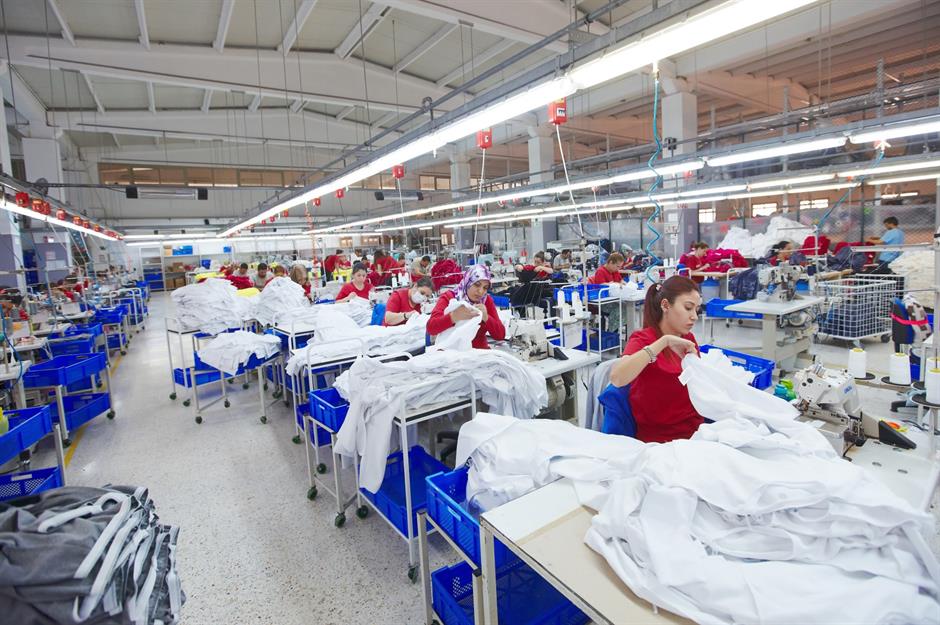
The American textiles industry is really feeling the pinch when it comes to staff shortages, and as a result companies are having to turn down contracts because they don’t have the workers to fulfil the orders. Employment at mills remains far below pre-pandemic levels, despite the increase in pay of around 18% since the start of the pandemic as factories look to lure in new hires. As DesignNews reported this June, the industry is currently facing a labor shortage of 20%, as well as supply chain issues and aging equipment.
Software engineers

Demand for software engineers has soared in recent years. There were around 920,000 unfilled IT positions in November 2019, according to CNBC News data, and the COVID-19 pandemic has only exacerbated the need for highly-qualified professionals to solve the world’s computing crises. One cause of the shortage is fewer international candidates receiving visas to work in the US, as well as the quick-changing nature of the tech industry meaning that applicants often require very specific skillsets.
Taxi drivers

Ride-hailing giants Uber and Lyft have been hiking up their fares in the last couple of years as they face staff shortages. On average the two companies increased their prices by a staggering 92% between January 2018 and July 2021, according to Rakuten Travel, as they struggled to find enough drivers to manage the recent rush in business and leisure travel. Prices have continued to soar this year due to persistent staff shortages.
A number of factors have contributed to the lack of drivers, such as workers holding out for higher pay and better conditions, and the fact that more than half of Uber and Lyft workers stopped driving altogether during the pandemic. The small workforce has been advantageous for those who are still working, however, with some drivers’ hourly earnings increasing by 85% compared to pre-pandemic levels. And it’s not just ride-hailing services that are struggling – there are currently far fewer of New York City’s iconic yellow cabs on the streets because of the shortfall.
Au pairs

In a typical year around 20,000 people come to the US to work as au pairs. But the Trump administration’s decision to suspend swaths of foreign work visas in 2020, coupled with COVID-19 travel restrictions, led to a shortage of people willing to move in with families to help with childcare and the day-to-day running of the household. The au pair industry hasn’t been immune to moves to incentivize jobs, with some desperate parents offering sign-on bonuses, personal cars and even lavish vacations to au pairs who choose to stay with them over other families.
Now take a look at the product shortages affecting America now
Comments
Be the first to comment
Do you want to comment on this article? You need to be signed in for this feature
Most Popular
Features How Michael Jackson's children boost their bank balances